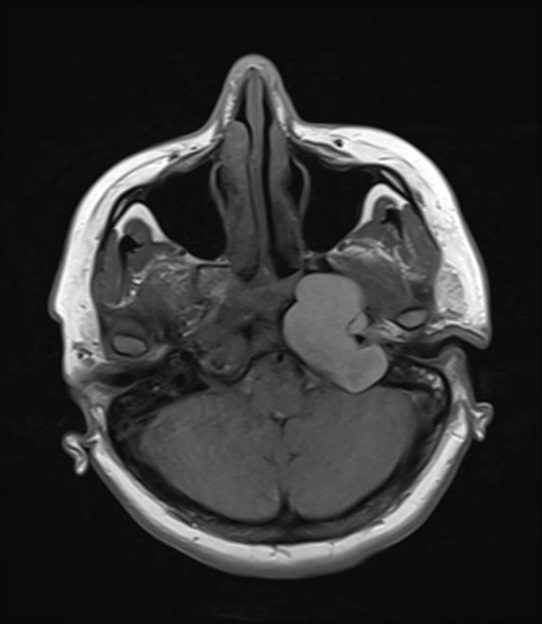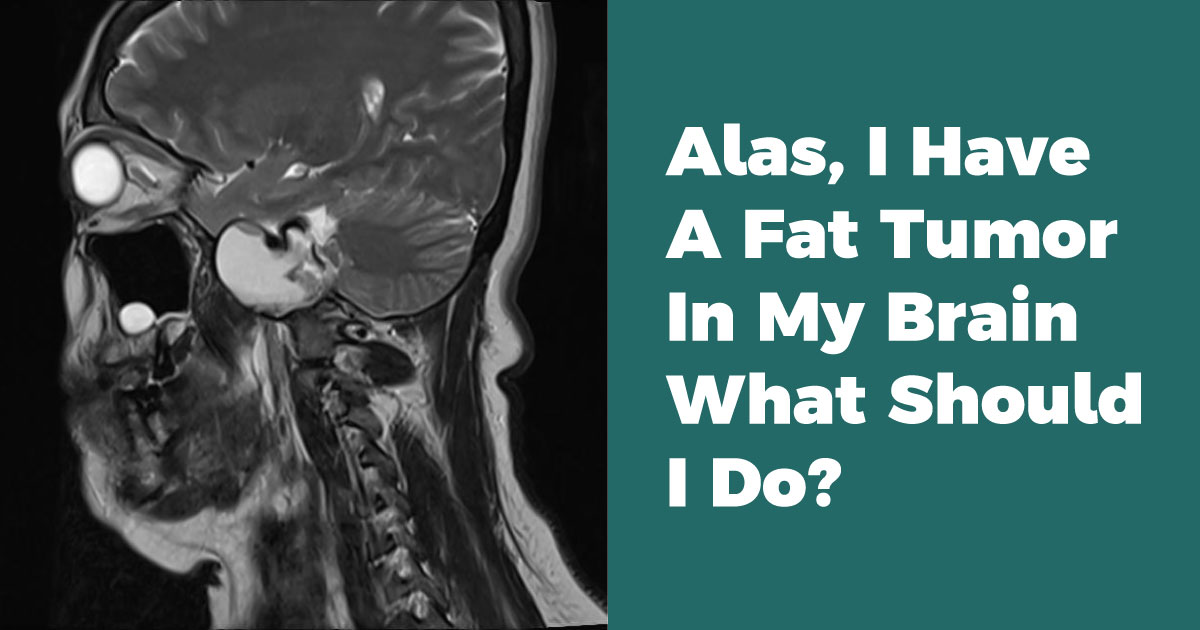Treatment options for cholesterol granulomas depend on the location and size of the tumor, as well as the severity of symptoms.
History of Mary
Mary, a 30-year-old teacher, began experiencing headaches that would come and go. At first, she didn’t think much of it, assuming that it was just stress or a normal part of daily life. However, as time went on, the headaches became more frequent and more severe, often accompanied by nausea and dizziness.
Concerned about her symptoms, Mary decided to see her primary care physician. After a thorough evaluation and neurological exam, her doctor ordered an MRI scan of her brain. The MRI revealed the presence of a small, non-cancerous brain tumor located near the surface of her brain.
Mary was referred to a neurosurgeon, who explained that while the tumor was not cancerous, it was located in a critical area of her brain that controlled important functions such as movement and speech. The neurosurgeon recommended that Mary undergo surgery to remove the tumor as soon as possible to prevent it from growing larger and potentially causing more damage.
After careful consideration and discussion with her healthcare team, Mary decided to undergo surgery. The procedure was successful, and the tumor was completely removed without any complications. Mary was able to return to work and resume her normal activities after a brief recovery period.
While the experience was difficult, Mary was grateful for the prompt diagnosis and treatment of her brain tumor. She has continued to monitor her health closely and is now more aware of the signs and symptoms of brain tumors. She encourages others to seek medical attention if they are experiencing persistent headaches or other symptoms that concern them.
Mary asks what is this Cholesterol Containing Tumor?
The doctor also explained that cholesterol-containing tumors are a rare type of brain tumor called cholesterol granulomas. Cholesterol granulomas are usually found in the middle ear or in the bones of the skull, rather than in the brain itself. These tumors contain a buildup of cholesterol and other fatty substances, which can cause inflammation and damage to the surrounding tissue.

Doctor Say Me How May I Overcome On This Cholesterol Granuloma?
Treatment options for cholesterol granulomas depend on the location and size of the tumor, as well as the severity of symptoms. In many cases, surgery is the best approach to remove the tumor and alleviate symptoms.
In some cases, minimally invasive endoscopic surgery can be used to remove small cholesterol granulomas located in the skull base or other hard-to-reach areas of the skull. This type of surgery uses a small camera and specialized tools to access the tumor through small incisions in the skull.
For larger cholesterol granulomas or those located in critical areas of the brain, traditional open craniotomy surgery may be necessary. During this procedure, the neurosurgeon makes an incision in the scalp and removes a section of the skull to access the tumor.
After surgery, the patient may need additional treatments such as radiation therapy to prevent the tumor from growing back. The patient will also need to undergo regular follow-up appointments to monitor their recovery and ensure that the tumor has been fully removed.
It is important to note that cholesterol granulomas are rare and treatment will depend on the specific characteristics of the tumor and the patient’s individual health status. It is important to consult with a neurosurgeon who specializes in brain tumors to determine the best course of treatment for your particular case.

Doctor Are There Any Surgical Complications About Surgery?
As with any surgical procedure, there are potential risks and complications associated with surgery to remove a cholesterol granuloma. These may include:
Bleeding: Surgery to remove a cholesterol granuloma can result in bleeding, which may require additional surgery or blood transfusions.
Infection: There is a risk of infection at the surgical site, which can delay healing and require antibiotics.
Swelling: Surgery can cause swelling and inflammation of the brain, which can cause headaches and other symptoms.
Neurological deficits: Depending on the location of the tumor, surgery may result in damage to surrounding tissue or nerves, which can lead to neurological deficits such as weakness or speech difficulties.
CSF leak: Surgery may result in a cerebrospinal fluid (CSF) leak, which can cause headaches and require additional surgery to repair.
It is important to discuss the potential risks and complications of surgery with your neurosurgeon before undergoing any procedure. Your surgeon will take steps to minimize the risks and monitor your recovery closely to ensure the best possible outcome.




Doctor, are these surgery complications very hight rate?
The rate of complications associated with surgery to remove a cholesterol granuloma varies depending on a number of factors, including the location and size of the tumor, the patient’s overall health, and the skill and experience of the surgeon performing the procedure.
In general, the risks of surgery are higher for larger or more complex tumors, as well as for patients who are older or have other medical conditions that may affect their ability to heal. However, most patients who undergo surgery for a cholesterol granuloma do not experience any significant complications and are able to recover fully.
It is important to note that every surgical procedure carries some degree of risk, and it is important to discuss these risks with your neurosurgeon before undergoing any procedure. Your surgeon will take steps to minimize the risks and monitor your recovery closely to ensure the best possible outcome.
Doctor can you say me about that the cholesterol granulomas can regrowth again after surgery?
Cholesterol granulomas have a tendency to recur after surgery if they are not completely removed or if the underlying cause of the tumor is not addressed. Incomplete removal of the tumor can occur if the surgeon is not able to access the entire tumor or if there is residual tumor tissue that is not visible on imaging studies.
In addition, cholesterol granulomas can recur if the underlying cause of the tumor is not addressed. This may include a blockage or obstruction in the drainage system of the affected area, which can cause fluid buildup and lead to the formation of a new tumor.
To prevent recurrence of a cholesterol granuloma, it is important to ensure that the entire tumor is removed during surgery and that any underlying causes are addressed. This may involve additional imaging studies or procedures to identify and address any underlying obstructions or drainage issues.
Regular follow-up with your neurosurgeon and imaging studies may also be necessary to monitor for recurrence of the tumor. If a recurrence is detected, additional surgery or other treatments may be necessary to address the tumor and prevent further complications.
Doctor, Are there any treatment options about that cholesterol granulomas?
Yes, there are several treatment options available for cholesterol granulomas, depending on the size, location, and underlying cause of the tumor.
Surgical removal of the tumor is the most common treatment option, particularly for larger or more complex tumors. Surgery involves removing the entire tumor and any associated fluid buildup to prevent recurrence. In some cases, a small incision may be made to access the tumor, while in other cases, a more extensive craniotomy may be necessary.
If surgery is not possible or if the tumor is very small, other treatment options may be considered. These may include observation, which involves monitoring the tumor with regular imaging studies to ensure that it does not grow or cause any other problems.
Another treatment option is aspiration or drainage of the tumor, which involves using a needle or catheter to remove the fluid from the tumor. This can help relieve symptoms and may be used as a temporary measure until more definitive treatment is possible.
In some cases, radiation therapy may be used to treat cholesterol granulomas, particularly if surgery is not possible or if the tumor recurs after surgery. Radiation therapy can help shrink the tumor and prevent it from growing, although it may take several months to see the full effects of treatment.
Finally, addressing any underlying obstructions or drainage issues may also be necessary to prevent recurrence of the tumor. This may involve surgery or other procedures to remove or bypass the obstruction and restore normal drainage.
Doctor, Latest I Heard using about Cryoablation technique in the brain tumors, is it possible this technique to be used in my condition?
Cryoablation is a minimally invasive technique that uses extreme cold to destroy abnormal tissue, including some types of tumors. While cryoablation has been used to treat tumors in various parts of the body, including the liver, lung, and prostate, its use in the brain is still relatively new and limited to certain types of tumors.
Cholesterol granulomas are not typically treated with cryoablation, as they are usually slow-growing and non-cancerous tumors that can often be treated effectively with surgery or other less invasive treatments. However, cryoablation may be considered for certain types of brain tumors that are more difficult to access with traditional surgical techniques or for patients who are not good candidates for surgery due to other medical conditions.
Ultimately, the decision to use cryoablation or any other treatment option will depend on a variety of factors, including the size and location of the tumor, the patient’s overall health, and the expertise of the medical team. I recommend discussing your specific case with a neurosurgeon or other medical specialist who can provide you with more information about the various treatment options available and help you make an informed decision about your care.
Medical Information About Brain Cholesterol Containing Mass Lesions and Lipomatous Lesions
What Are The Cholestherol Containing Brain Mass Lesions Lipomatous Lesions
Cholesterol-containing brain mass lesions and lipomatous lesions are two types of brain tumors that are composed of fatty or lipid-rich tissue.
Cholesterol-containing brain mass lesions, also known as cholesterol granulomas, are benign tumors that are typically located in the middle ear or petrous bone, which is located at the base of the skull. These tumors are thought to form as a result of chronic inflammation or bleeding in the middle ear, which can lead to the accumulation of cholesterol and other fatty substances. Cholesterol granulomas are usually slow-growing and may not cause symptoms until they become large enough to put pressure on nearby structures.
Lipomatous lesions, on the other hand, are a group of brain tumors that are composed of adipose (fatty) tissue. These tumors are rare and can occur anywhere in the brain, although they are most commonly found in the frontal lobes. Lipomatous lesions can be either benign or malignant and may cause symptoms such as headaches, seizures, and cognitive changes.
Both cholesterol-containing brain mass lesions and lipomatous lesions are typically diagnosed using imaging tests such as MRI or CT scans. Treatment options depend on the size and location of the tumor, as well as the patient’s overall health and other medical conditions. In some cases, surgical removal may be recommended, while in others, observation or other forms of treatment may be appropriate.
Prognosis of the Cholesterol Granulomas?
The prognosis of cholesterol granulomas generally depends on the size and location of the tumor, as well as the effectiveness of the chosen treatment. In most cases, small cholesterol granulomas that are located in less critical areas of the brain can be surgically removed with a low risk of complications and a good chance of long-term recovery.
However, larger tumors or those located in critical areas of the brain may be more difficult to treat and may require a more aggressive approach, such as radiation therapy or a combination of treatments. In some cases, there may be a risk of complications or long-term neurological deficits, depending on the size and location of the tumor and the chosen treatment approach.
Overall, the prognosis for cholesterol granulomas is generally good, particularly if the tumor is caught early and treated promptly. However, it is important to note that every case is unique, and individual outcomes can vary depending on a variety of factors, including the patient’s overall health and the expertise of the medical team.
Keywords: Cholesterol granuloma, brain tumors, cryoablation, minimally invasive surgery, treatment options
Written By. Dr. Mustafa Akgun
Last Revision: 06.03.2023

